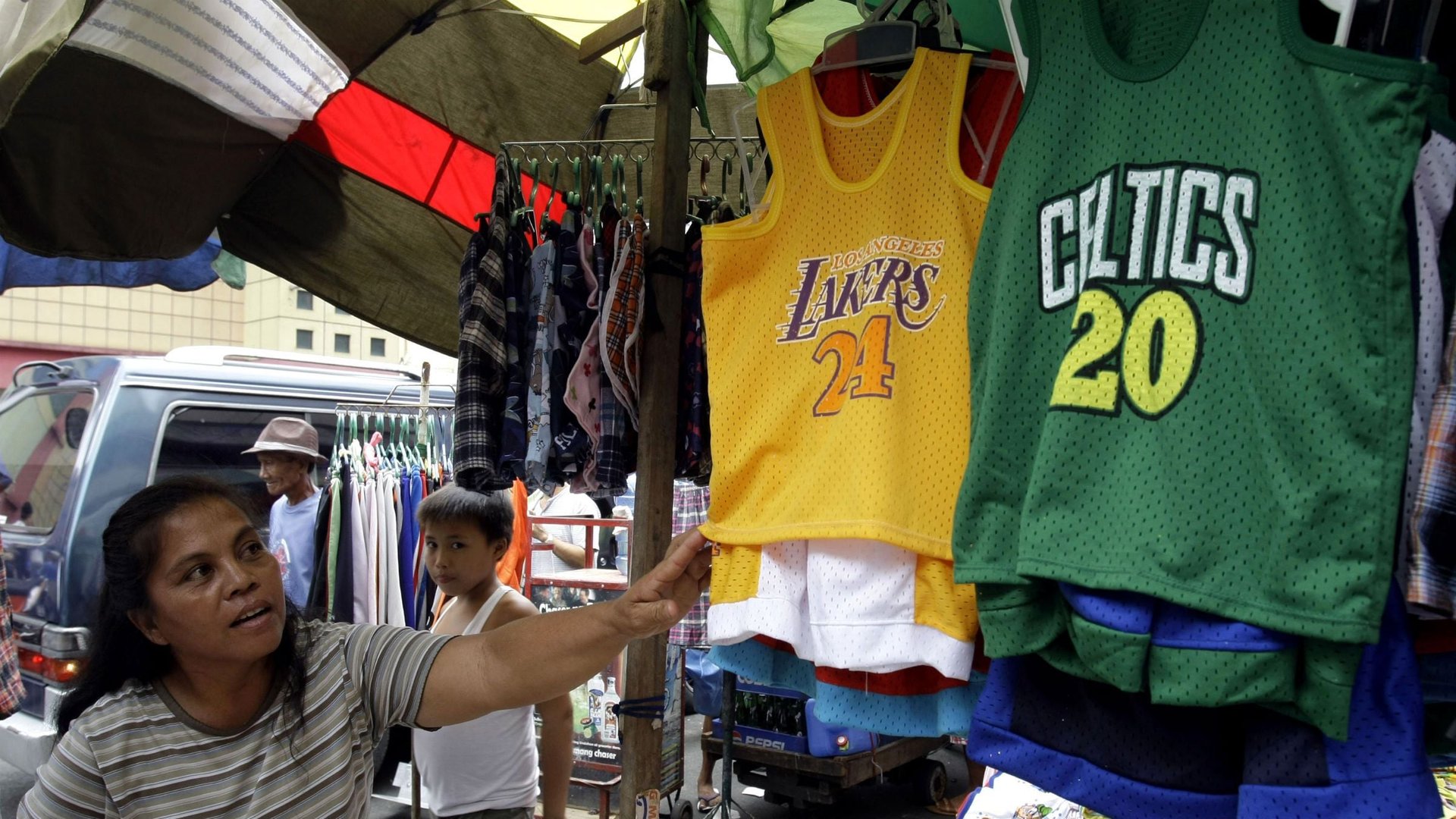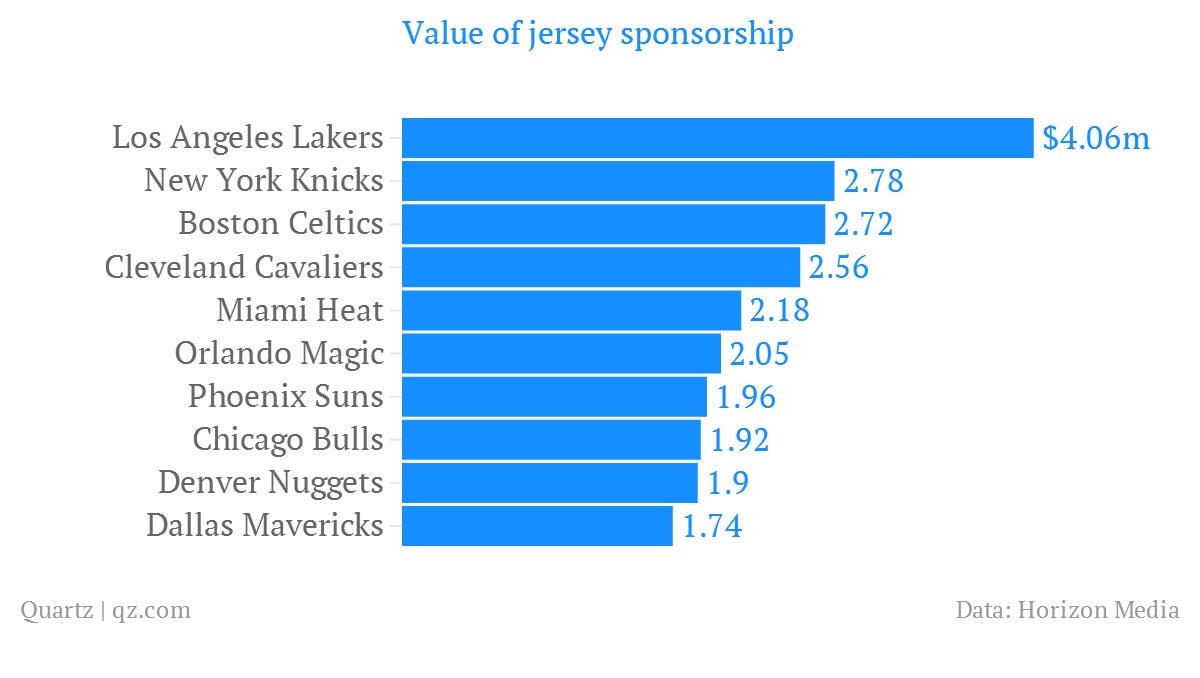TV-watching habits are about to change the look of the NBA
The new commissioner of the NBA, Adam Silver, has not taken long to make his mark. The league’s iconic jerseys are likely to get a new look, thanks to the start of corporate sponsorships, a move Silver has described as “inevitable.” He expects logos to begin popping up within the next five years. The arguments for and against logos on jerseys have been made for years, but a combination of buoyant broadcasting rights and fan opposition has so far kept the shirts ad-free.


The new commissioner of the NBA, Adam Silver, has not taken long to make his mark. The league’s iconic jerseys are likely to get a new look, thanks to the start of corporate sponsorships, a move Silver has described as “inevitable.” He expects logos to begin popping up within the next five years. The arguments for and against logos on jerseys have been made for years, but a combination of buoyant broadcasting rights and fan opposition has so far kept the shirts ad-free.
To sports fans outside of the US, especially those that have grown up watching soccer, the fact that the NBA has held out so long appears odd. Liverpool was the first major club to wear a sponsor on its shirts when it signed a deal with Hitachi in 1979 while Barcelona, which held out for 25 years, has recently added sponsors to both the outside and the inside of its shirts. The fact that Barcelona will earn $25 million for a logo that will only be seen when one of its players removes his shirt to celebrate a goal demonstrates the value of the real estate.
In the US, this trend has been slower to take off. Real Salt Lake of Major League Soccer was the first professional sports team in the US to wear a sponsored jersey, but this was only as recent as 2006. Since then, the door has opened further. Teams in the WNBA caught on, as did the NBA’s D-League. In 2009 the NFL permitted its teams to wear logos on their practice jerseys and the NHL followed months later. But in financial terms, these deals have been small and none of the big four leagues—the NBA, NFL, NHL and MLS—have made the jump to put sponsors front-and-center on their most recognizable uniforms.

Nevertheless, in 2011 media agency Horizon Media estimated that the value of the NBAs 20 biggest teams carrying logos on their jerseys would be more than $30 million a year. As in other leagues, the value was highest for the most popular teams, in this case the Lakers and the Knicks. The study did not differentiate for the type of sponsor that the teams may attract.
But it is not the potential for a new revenue stream that’s behind Silver’s push. His concern is the changing way that we watch television. He told a radio station: “In this day and age of non-live programing where people are using their DVR and skipping through commercials it’s just that much more of an opportunity for our sponsors to get that much closer to our game, to be close to our athletes.” In other words, he is expecting TV ad rates to fall as more of us time-shift our viewing and skip the ads.
Certainly, there is evidence that more and more of the TV in the US (and elsewhere) is watched through a DVR or other device. According to Nielsen’s latest report the average adult watched 5 hours and 4 minutes of live TV in and 32 minutes of time-shifted TV a day in 2013, compared with 4hrs 46 minutes of live TV and 12 minutes of time-shifted TV in 2008. These trends show that the availability of DVRs are not causing Americans to watch more TV as much as they are replacing their live-TV watching with playbacks. Time-shifted TV as a proportion of the total has risen from 4.2% in 2008 to 10.5% in 2013, but the total number of minutes watched has grown only by 12.7%. Given that only half of homes with TVs also own a DVR, the popularity of time-shifting has still to reach its peak. And it is this trend that has Silver worried.
However, if there is a genre of television that should be insulated from the playback phenomenon, it is surely sports. Watching a game is a social event as much as a visual one; evenings and weekends are planned around it. Even, or perhaps especially, in the digital age, fans continue to want watching sports to be an interactive experience. This is why 50% of the 1 billion tweets that were sent in the US about television in 2013 were about sports events. Just as the arrival of live television broadcasts failed to kill the going-to-the-game ritual, it is unlikely that the ability to watch sports at any hour of the day will encourage fans to do just that. Nevertheless, Silver is warning teams and their fans that the changing media landscape will not pass basketball by entirely.